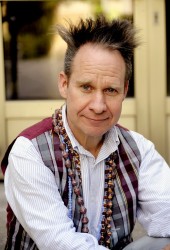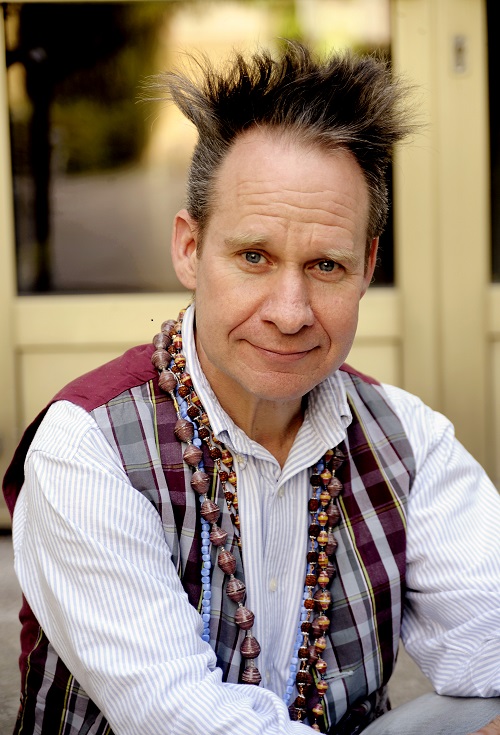 United States Schumann, Das Paradies und die Peri: Los Angeles Philharmonic Orchestra / Gustavo Dudamel (conductor), Los Angeles Master Chorale (director: Grant Gerson), Walt Disney Concert Hall, Los Angeles, 2.6.2018. (DD)
United States Schumann, Das Paradies und die Peri: Los Angeles Philharmonic Orchestra / Gustavo Dudamel (conductor), Los Angeles Master Chorale (director: Grant Gerson), Walt Disney Concert Hall, Los Angeles, 2.6.2018. (DD)

Production:
Director – Peter Sellars
Media artist – Refik Anadol
Lighting designer – James F. Ingalls
Robert Schumann’s Das Paradies und die Peri landed in the Walt Disney Concert Hall for its first Los Angeles Philharmonic performance a mere 175 years after its 1843 Leipzig debut. Prior to the concert, Brian Lauritzen, host of LA Philharmonic broadcasts, delivered a lecture that revealed the many virtues and points of interest in this difficult-to-encapsulate work and proclaimed its right to be considered at the highest level of music composition.
Something of a cross between opera and oratorio, the piece tells the story of a Peri, part fallen angel and part mortal, who has been denied admittance to Heaven because of the sin of his/her parentage (a Peri is a hermaphrodite). Schumann’s work is divided into three discrete but linked sections. The first depicts the Peri’s heroic action on a battlefield in India (alas, admittance to Heaven is denied); the second takes place in plague-wracked Egypt where she captures the final sigh of a supportive maiden, yet again is denied entry (narrative-wise, it’s as complicated as it is convoluted). In the third section, the Peri wins her passage to Paradise by capturing a tear of repentance from an ancient miscreant’s remorse over his lifetime of sin and blasphemy. Three’s the charm, and the Peri enters Heaven amidst the joyous acclamations of the chorus which had been rooting her on from the opening passage of this ‘operatorio’.
Added to this performance – one already loaded with soloists, orchestra, chorus, lighting designers and visual artists of all kinds – was a massive, multi-dimensional projection backdrop. Imagine a huge, steroid-fed turnip, the size of a blimp, floating balloon-like in the upper stage-left front of Disney Hall, whose looming presence is a visual manifestation of psychological tumult, disturbance and ultimate tranquility.
We were reminded in the pre-concert lecture that Das Paradies und die Peri was once among the most famous of all of Schumann’s compositions but has subsequently fallen into disregard. After hearing this performance, one can surely say it is one of the most original and inspired of Schumann’s creations. The music is as colorful as anything he wrote and, while not flawless, the work contains some of his most intimate and ethereal passages.
The tale’s text could be Exhibit A in support of author Edward Said’s thesis, found in his 1978 classic book, Orientalism. Said argues that aspects of Western representations of ‘The East’ debase the reality of the truth in their depictions of the culture, but the version of Das Paradies und die Peri presented at The Disney Hall washed most if not all ‘orientalism’ from its artistic expression. The result was human and universal to its core.
Peter Sellars’ adaptation of the story does what he often achieves. By changing time and place but keeping intact the human and artistic motivations and manner of expression – Don Giovanni as an extended blaxploitation riff, Marriage of Figaro in a decadent Trump Tower, Handel’s Orlando in outer space – Sellars manages to preempt the premise and overturn pedestrian expectations. Das Paradies und die Peri is transformed from fairy tale into a statement of moral imperative, one found in some of the world’s most troubled places. Myth merges with reality, and context upsets intended perception. While I admire most of Sellar’s adapted placements and contexts, without question this one works particularly well: it is, after all, a fairy tale.
The vocal soloists were excellent, but special credit should go to soprano Lucy Crowe as the Peri, Tamara Mumford’s gripping stint as the angel and baritone Davóne Tines. Their tuneful dialogs with one another were dramatic and balanced. Joshua Stewart, Ying Fang and Benjamin Bliss rounded out the team of vocal soloists, while Grant Gerson shaped the entirety of The Master Chorale. Their performances were nothing if not exemplary.
The performance was uniformly superb. The LA Philharmonic remains at the summit of the orchestral world, and time and again reminded us of their excellence in both solo bravura and ensemble solidity; the Master Chorale continues to match its instrumental counterpart. Los Angeles and its serious music audience have been fortunate in the scope of their 2017-2018 programming, with its unconventional and atypical offerings, unexpected pairings and surprises.
Douglas Dutton
